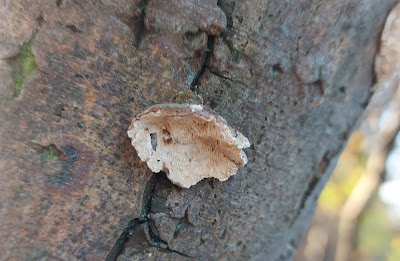The Forth and Clyde Canal, as ever, proved to be a very productive site for birdwatching. Waterbirds consisted of Mute Swan, Mallard, Tufted Duck, Goosander, Moorhen and Little Grebe. The Goosander group consisted of an adult male, an adult female and a probable juvenile female. The male was in full breeding plumage as was the male I saw on the river in south Cardonald last week. In contrast, the single male on Cowdenknowes Reservoir last week and many of the males in the large flock on Gartmorn Dam yesterday were in transitional plumage. I wonder if these are younger birds (possibly in their first winter and without a winter territory) whereas the ones that have completed their transition are more mature males already established where they will be spending the winter. Also notable in what is quite an urban setting were several interesting fungi on canalside trees and several Broad-leaved Helliborine plants with heavy seed pods.






0 Comments:
Post a Comment
<< Home